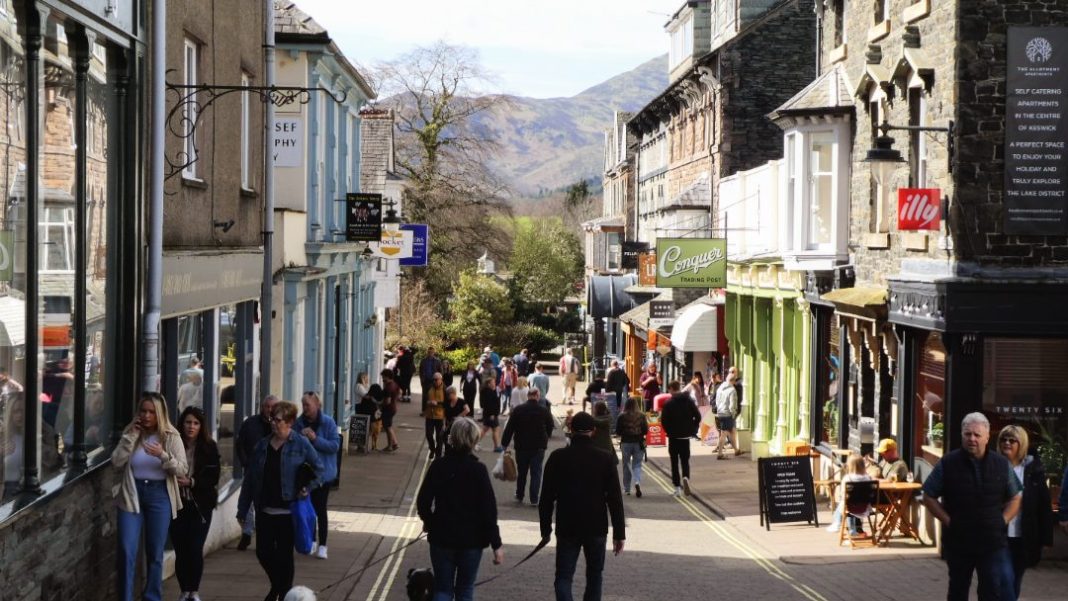“In the state of Washington, under a near constant cover of cloud and rain, there is a small town named Forks. Population: 3,120 people. This is where I’m moving.” (Twilight, 2008)
Twilight’s Forks may be responsible for the current online popularity of the small town aesthetic, but our predilection for these television towns is recurrent throughout modern classics of narrative media. From supernatural small towns like Buffy the Vampire Slayer’s Sunnydale and the eponymous Twin Peaks, to the more pastoral Stars Hollow of Gilmore Girls: the reboots of the latter two shows, some decades on, is testament to the perennial nature of our small-town-fever. As is the emergence of more recent favourites like Ginny and Georgia’s Wellsbury, Wednesday’s Jericho, and Stranger Things’ Hawkins.
I find myself associating these kinds of shows with the colder months, whether by the creators’ design or my own interpretation, and I believe this is linked to my annually recurrent desire to abscond to a cosy, American, stuck-in-the-90s small town, in the manner of Bella Swan. Judging by the abundant online discussion about the best autumn TV shows, and the annual revival of the Twilight and Gilmore Girls fandoms, this seasonal postcode envy is far from a unique phenomenon. Something about the turn in the weather has us all craving the cosy atmosphere offered by small towns in visual media. But what exactly drives this cyclical change in media consumption?
Our autumn-induced appetite for scary stories, at least, is far from a mystery — the horror genre transforms the miserable weather into an exquisite literary device, and lends some catharsis to our excitement for Halloween. Incidentally, the American small town offers the ideal conditions for such stories, with its deceptively quiet backdrop presenting a false image of serenity to conceal the inevitable secrets and shadows within. Flawlessly balancing deceptive tranquillity and a foreboding atmosphere, the rural small town’s prominence in the horror genre is well deserved and raises few questions.
“Stars Hollow does not have a ‘seedy underbelly’. We don’t even have a meter maid.” (Gilmore Girls, 2.12)
However, this functional explanation can’t be the only reason we’re drawn to small town settings. Whilst our autumn favourites of the romance genre feature traditional gothic villains like vampires and werewolves, these spooky-turned-sexy male leads are hardly supposed to inspire fear. Forks (Twilight) and Mystic Falls (The Vampire Diaries) have their own aesthetic appeal. And wholesome dramedies like Gilmore Girls have no intention to frighten, but are nonetheless beloved as quintessential sweater weather classics. Why else, then, do we crave our seasonal small town fix?
I think that this phenomenon can be partly attributed to a collective sense of nostalgia. Beyond the fact that many of these films and series were produced some decades ago, the American small town aesthetic itself evokes the quaint simplicity of the late 20th century (or our romanticised ideal of it, at least).
In a world where an endless stream of global news and mind-numbing content is forever at our fingertips, there is some pacifying appeal to a more detached, introspective way of living. The close-knit communities and archaic traditions portrayed in small town media seem to represent a hope that the innocence of pre-internet life is still possible. If narrative media exists to offer escapism, small town settings enable escape into a particularly idyllic snapshot of the past.
“Life has a meaning here — every life. That’s a way of living I thought had vanished from the earth, but it hasn’t, Albert; it’s right here in Twin Peaks.” (Twin Peaks, 1.03)
Community is particularly central to this vision: implicit in the idealisation of this endangered way of life is a sense of connectedness. On the one hand, technology has given us the ability to communicate instantaneously and farther than ever before; on the other, this has diminished our interaction with people on a more intimate level. Where residential community once built strong, meaningful relationships on a small local scale, the anonymity and insularity of online life has resulted in a widely yet shallowly connected society. The small town aesthetic offers us respite from this comparatively lonely modern way of living, with its small casts of characters, closely intertwined, imitating our ideal of the community we feel we have lost.
In many ways, life at Oxford seems to appeal to those same sensibilities which fuel our craving for small town charm. The college environment manufactures a kind of small town set-up, wherein gossip is epidemic and “everyone knows everyone”. For all its consequent drama, intra-college community is endearingly convivial and is, without rival, the thing I miss most about Oxford when I’m away.
The university also has that same timeless quality we seek in small town media — the product of its historic architecture, antiquated traditions, and periodic immortalisation in art and literature. Having spent every autumn of my adolescent years searching for this precise and ineffable feeling in works of fiction — the only place I believed it to be absolutely alive — it is with pleasant surprise that on reflection, I have found it to be tangible and immortal here, in Oxford.


